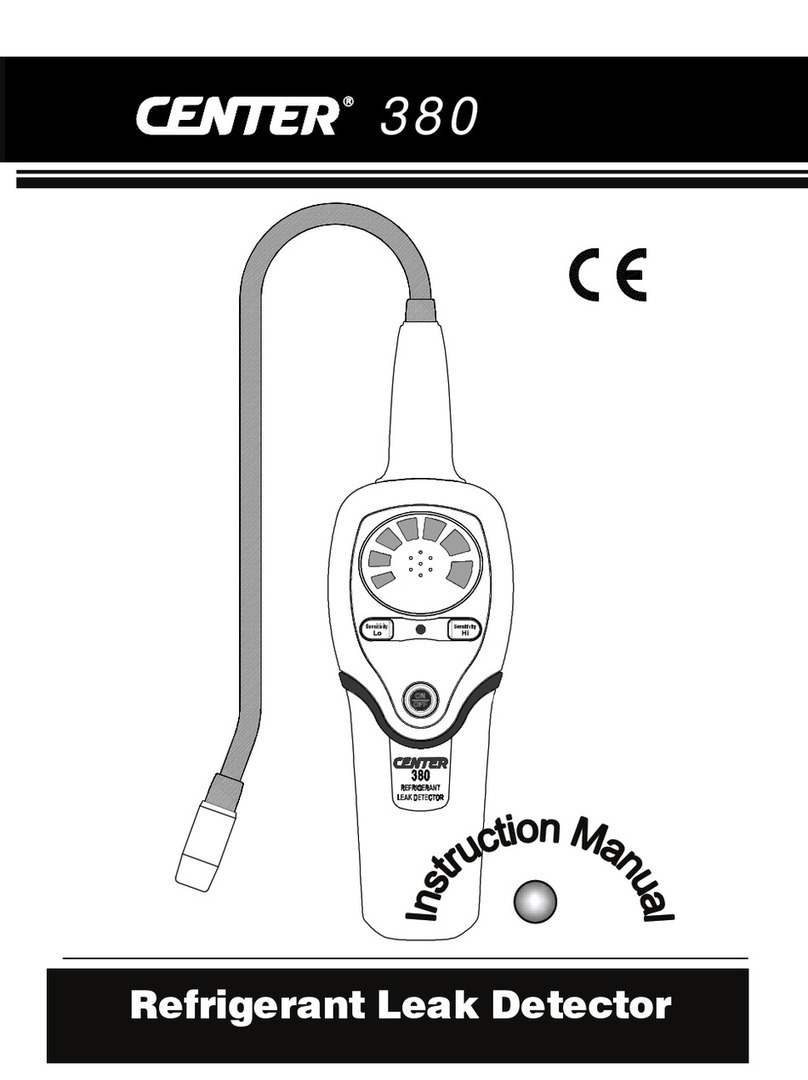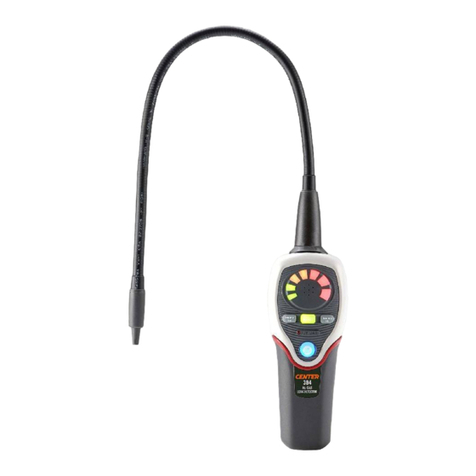
Refrigerant Leak Detector
6-2 Automatic Ambient Reset Feature
This Refrigerant leak detector features an Automatic
Ambient Reset function that sets the unit to ignore
ambient concentrations of refrigerant.
▪ Automatic Ambient Setup - Upon initial power on,
the unit automatically sets itself to ignore the level
of refrigerant present at the tip. Only a level, or
concentration, greater than this will cause an alarm.
CAUTION!
Be aware that this feature will cause the unit to
ignore any refrigerant present at turn on. In other
words, with the unit off if you place the tip up to a
known leak and switch the unit on, no leak will be
indicated!
▪ Ambient Reset Feature - Resetting the unit during
operation performs a similar function, it programs
the circuit to ignore the level of refrigerant present
at the tip. This allows the user to 'home-in' on the
source of the leak (higher concentration). Similarly,
the unit can be moved to fresh air and reset for
maximum sensitivity. Resetting the unit with no
refrigerant present (fresh air) causes any level
above zero to be detected.
▪ After the unit is warmed up, the default sensitivity
level is set at “High” and Auto Reset function is
“ON”
▪ Auto Reset function is best used initially when user






























